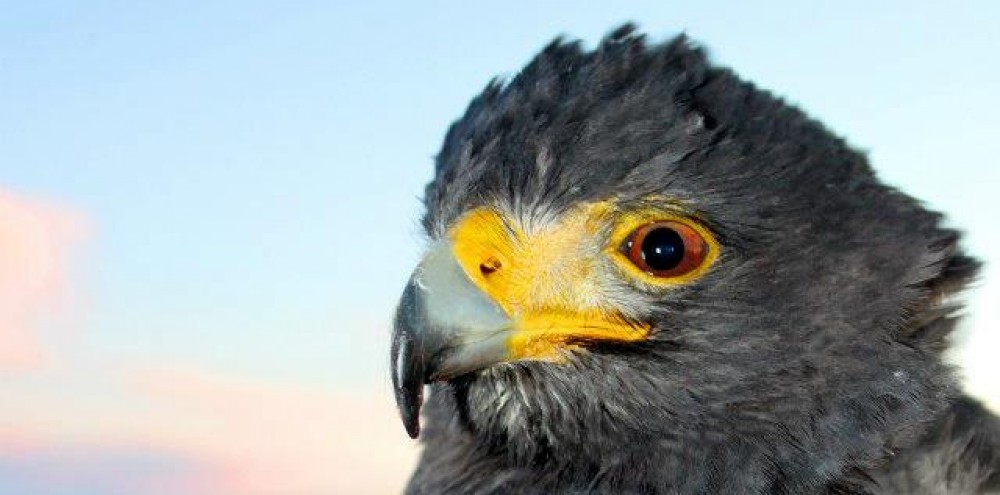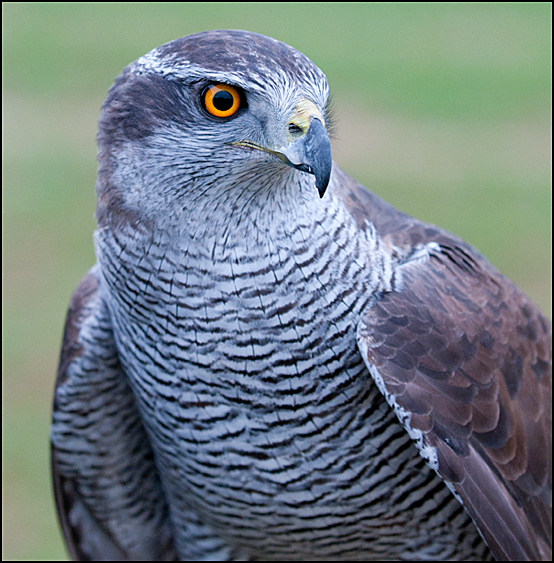There is no such thing as a ‘beginners bird’ and all raptors in captivity deserve the same respect and enrichment. Choosing which bird of prey is suitable for you should come well after you have gained significant experience and knowledge, but also depends on the land and quarry on which you wish to hunt.
Harris hawks are a personal favourite of mine, they are intelligent and can learn very quickly. This still means, however, they deserve the utmost respect, care and should only be owned by people who have prepared and researched everything they can about these birds. A Harris Hawk is part of the buteo family and classed as a Broadwing, this is because of the shape of their wings which effects their hunting styles. Typically Harris hawks will take terrestrial prey such as rabbits, but they can be trained to take aerial prey too.
The Red Tailed Hawk is a personal favourite of mine. I was lucky enough to begin falconry with this hawk. They are very intelligent, however, a strong relationship needs to be built with these birds, a lot of patience and time needs to be spent so they begin to trust you. They have a reputation to not like to release a catch, building trust helps the hawk understand you are not stealing it’s prey, you should never take away the catch before they have chance to eat a little otherwise in future they won’t let you take it. Also part of the buteo family, this broadwing is often used in the US for hunting squirrels, but in the UK typically used for rabbits.
The Ferruginous Hawk is a large bird of prey originating in North America. The genus of this bird caused some confusion for a while due to its genetics being similar to both hawks and eagles. They have many characteristics to eagles, such as long ‘trousers’ and typically a bad attitude, and much like an Eagle these birds never forget. They are intelligent with incredible memories. Although all birds of prey are dangerous in their own right, larger species should only be handled by experienced falconers. All raptors deserve respect and will not tolerate an owner who does not treat them they way they should be. The phrase, ‘at the end of your tether,’ comes from falconry, as it means when the bird has baited and reached the end of it’s tether.
The Goshawk is a very specialist bird. Peoples opinions vary as to the best ways to train this bird. Some falconers prefer to imprint the bird, which means, taking the chick away from it’s parents and rearing it so it thinks it is a human, however, this can result in them becoming very needy for human company, food aggressive and they can become very loud if not trained properly. Other falconers believe they should be kept with their parents for the first 16 weeks so they identify themselves as a hawk and later be manned as often as possible create a trusting relationship. You may ask yourself, why bother with the hassle of training this bird over other raptors? The agility and power of a Goshawk is incomparable to that of a buteo. Goshawk’s belong to the accipiter family, the same as sparrowhawks, and are a raptor evolved to hunt in woodland. Their short wings make them the kings of hunting through thick tree lines and they are extremely powerful birds capable of successfully hunting pheasants on straight flight. There are also different types of Goshawk which are bred in different ways, such as the Finnish or Russian Goshawk, which are selectively bred in different ways to produce individual specimens at different weights, morphs and temperaments.
The Peregrine Falcon is the fastest living creature. They can reach speeds of 200mph. They accomplish this by stooping, which means trained falcons reach heights over 2000 metres, then dropping to the earth. Some may argue this doesn’t make them the fastest living creature, however, this speed is completely controlled by the falcon. These long wings are very specialist birds and require an experienced falconer to train them to their full potential. They require training on a lure, which is a piece of weighted leather which resembles a bird, with food attached, which is swung in circles to replicate their prey and encourage natural hunting flight behaviour. The falconer moves this quickly out of the way every time the bird comes in for the catch, the more passes the bird can achieve before getting tired the better. This builds up their fitness thus creating a better hunting bird. There are also other methods of fitness training to encourage altitude and speed such as flying to kites and drones.
Very experienced falconers with the land, quarry and time may consider hunting with an eagle. There are no short cuts with these birds, they take pure dedication and ultimate respect. The Golden Eagle above has a wing span of 6ft, and weighs over 10lb. He is a very big and dangerous bird. While 10lb may not seem significant, it’s worth remembering that birds in general are built to be lightweight, with hollow bones and little muscle mass. Compared to a 2lb Harris hawk, they’re giants. Golden Eagles have been used in the Far East for thousands of years, traditionally hunting wolves from horseback, today some falconers still hunt with them.






























